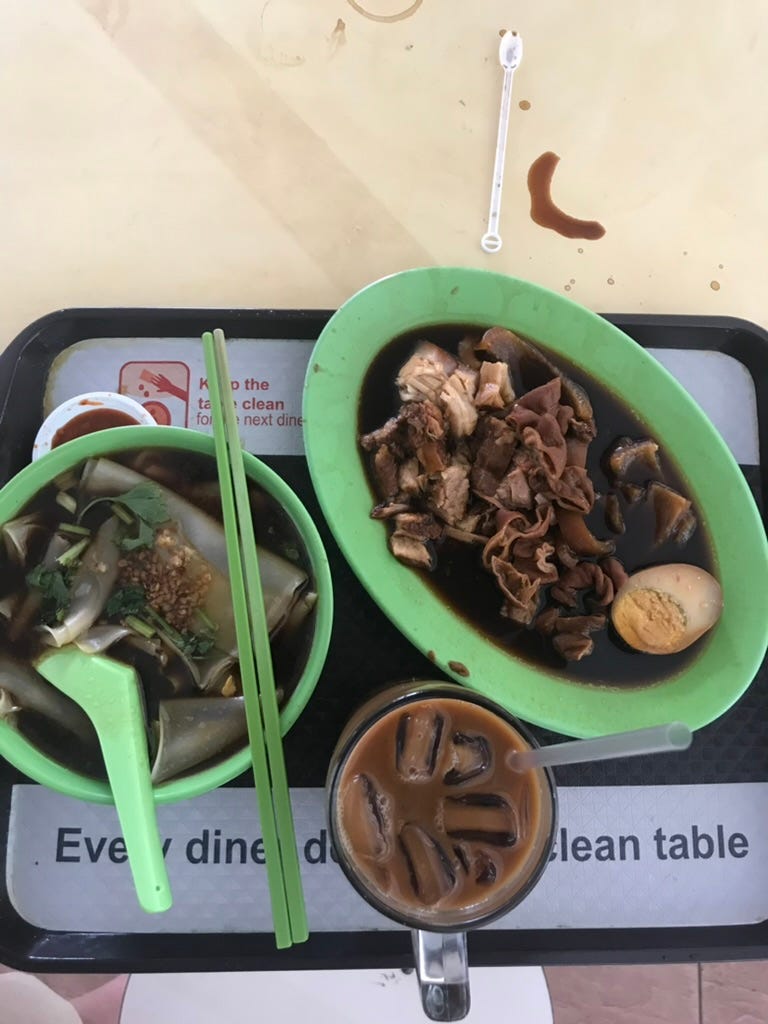A couple of days ago, we got takeout curry. My mum brought her own steel tiffin carrier to the hawker stall, where it got loaded up with chicken and fish curries. The practice of bringing your own container is still relatively common in Singapore, though the health authorities in the US would have a fit.
When I was growing up, a lot of food came in plastic bags, like this. They were used from everything from mee pok tar to coffee. Coffee would be drunk straight from the bag, through a straw. The mee pok would end up in a bowl, without being taken out of the bag. You’d essentially eat from the bag, with the bowl providing a little structure.
The combination struck me as a sort of min-maxing of resources – the containers were either infinitely reusable, or extremely disposable because they were so minimal.
In Japan, sushi-oke, the round, lacquered trays in which an assortment of nigiri would be arranged, are both serving vessels and takeout containers. If you order from your neighborhood sushi-ya, someone comes round with the order stacked in oke, with the expectation that you’ll bring them back when you’re done. The containers are not merely reusable but precious, and the social contract supports that.
In the US we’re used to rigid plastic takeout boxes, which are more resource-intensive than plastic bags, and also leave one in doubt as to how disposable they actually are. (These are also increasingly the norm in Singapore.)
Some restaurants are switching to supposedly reusable plastic takeout containers, but I wonder how many of them will see the containers piling up behind the restaurant, eventually to go to landfill, because someone, somewhere along the line, couldn’t be bothered to do otherwise, or couldn’t make enough money collecting them. Neither the social contract nor the urban arrangements that would support reusability are in place in the US, and I wonder if these containers have enough physical and tactile cues to induce consumers to use them as intended.
Every diner deserves a clean table indeed. Especially when the kway chap is this good, a textural delight singing with white pepper and cilantro.




makes perfect sense.